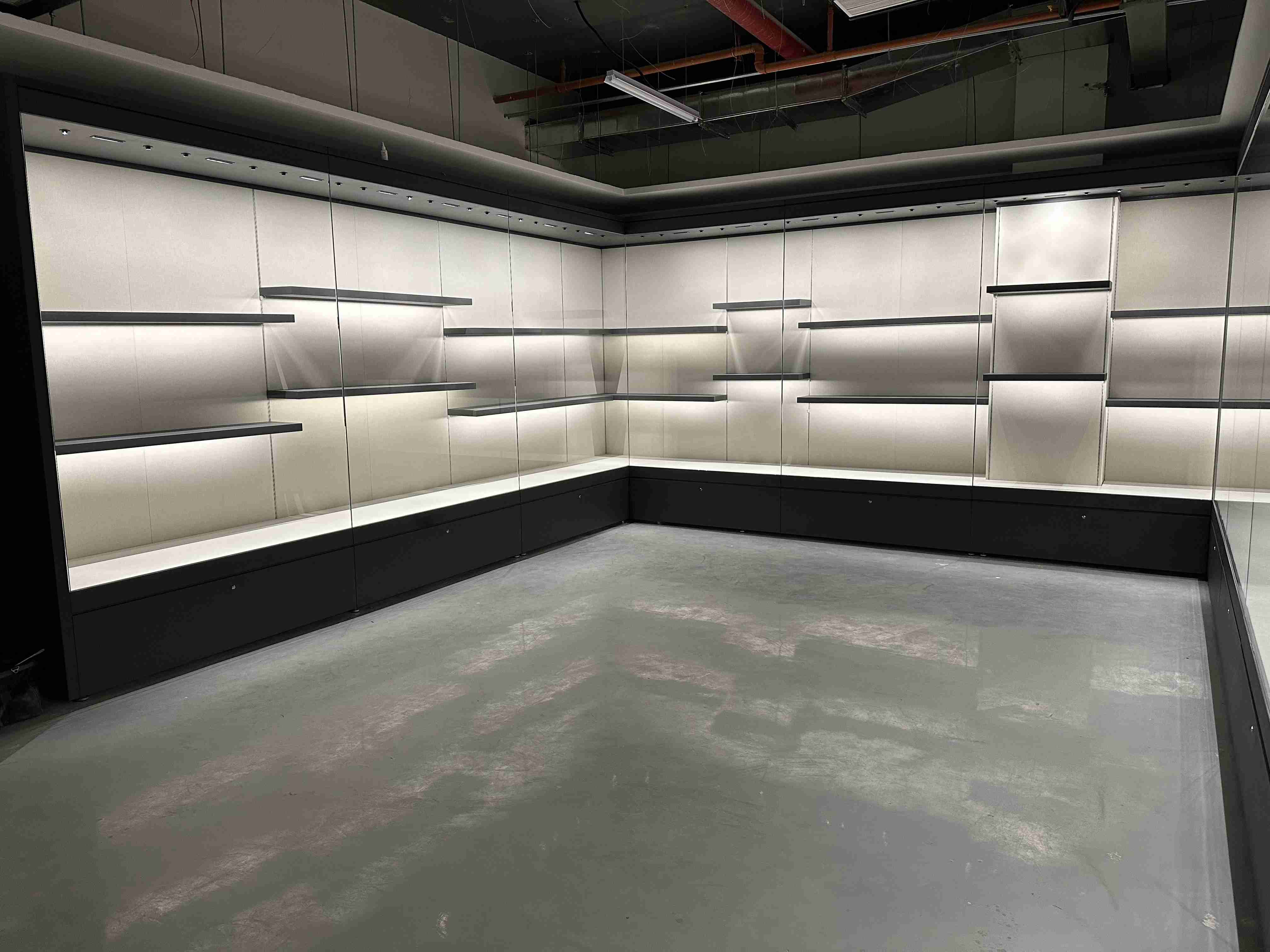& nbsp; & nbsp; As the core carrier of cultural relics display, the design of museum display cabinet should take into account safety, ornamentation and functionality. With the progress of display technology, different types of display cabinets are constantly innovating in form and function to meet the diverse display needs. The following is an introduction to the common types of display cases in museums and their characteristics.
& nbsp; 1. Independent cabinet: The focus carrier of multi-dimensional display. The independent cabinet is usually located in the center of the exhibition hall, with 360 ° panoramic display capability. For example, the panoramic independent high cabinet allows the audience to view cultural relics from multiple angles through transparent glass on all sides. According to the size difference of cultural relics, the independent cabinet is divided into large cabinet and table cabinet: the former adopts automatic translation opening, which is suitable for group cultural relics display; the latter adopts lifting design to present flat cultural relics (such as ancient books, paintings and calligraphy), which is convenient for close observation. As the visual focus of the exhibition hall, the independent cabinet is often used for the display of precious cultural relics.
& nbsp; 2. Hanging cabinet: The three-dimensional hanging cabinet (overhanging cabinet) of the wall space is fixed on the wall through the metal bracket to form the effect of "air exhibition stand". Small hanging cabinets are mostly used for miniature cultural relics such as badges and specimens, which are opened by hydraulic lifting; large hanging cabinets are translated by electric rails, which can accommodate multiple cultural relics and improve space utilization. Its suspension design breaks the plane sense of traditional display cabinets and brings new viewing experience to the audience.

& nbsp; 5. Multimedia display case: a new form of technology-enabled multimedia display case integrates traditional display case with digital technology, and dynamically presents the historical stories behind cultural relics through projection, touch screen or AR interaction. The traditional display function is maintained when the power is off, and the audio-visual experience is activated when the power is on, taking into account both safety and fun. Such exhibition cabinets are mostly used in popular science museums or interactive exhibition areas to enhance the audience's sense of participation.
& nbsp; The selection of display cabinet type should be based on the characteristics of cultural relics, exhibition hall space and display objectives. In the future, with the iteration of material science and intelligent technology, museum exhibition cabinets will continue to develop in the direction of modularization, ecology and intellectualization, and build a more vivid dialogue bridge between cultural relics and audiences.
& nbsp; Huabo Art Exhibition has been deeply engaged in the design, customization, production and installation of exhibition cabinets for more than ten years, creating quality with ingenuity and leading the future with innovation. We focus on providing one-stop display cabinet solutions
for museums, art galleries, memorials, art galleries, science and technology museums, history museums, memorials and other cultural institutions.previous:What are the core elements of structural safety of museum display cabinets?
next:The Significance and Function of the Display Cabinet in Art Galleries: a Vessel to Guard Art and a B